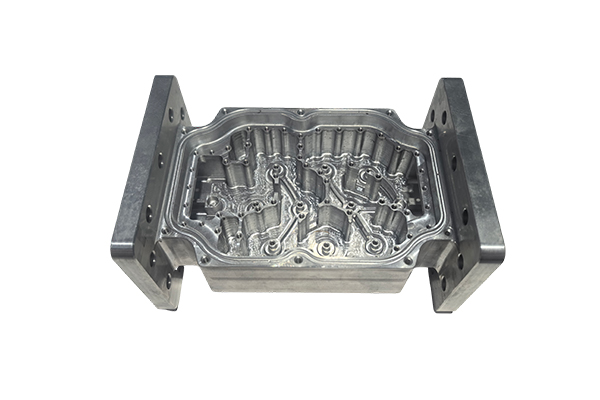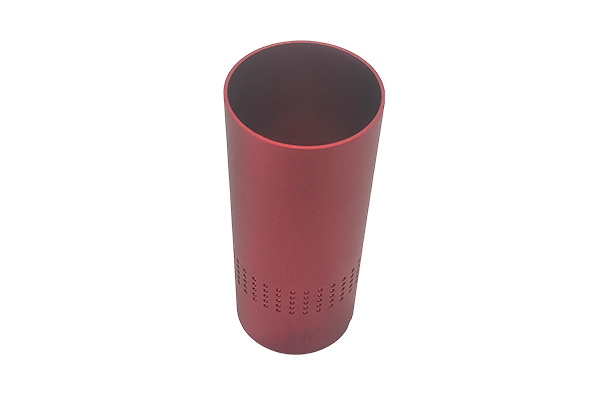How to ensure copper nut injection nut embedded parts are stable and not loose in plastic parts?
Release Time : 2025-04-16
The stability of copper nut injection nut embedded parts in plastic parts is one of the key factors to ensure the performance and service life of the final product. Through a series of carefully designed technical measures, these embedded parts can remain stable and not loose in complex use environments, providing reliable connection solutions for communication products, etc.
First of all, in terms of material selection, copper as a material for making nuts has excellent mechanical properties and good electrical and thermal conductivity. More importantly, the copper material itself has a certain elastic modulus, which enables it to produce moderate deformation when subjected to external force, thereby enhancing the friction between it and the plastic substrate. In addition, in order to further improve the bonding strength between the nut and the plastic, special treatments are sometimes performed on the surface of the copper nut, such as knurling or adding barb structures. This surface treatment increases the contact area and uses the guiding effect of the microscopic shape on the flow of plastic, so that the plastic wraps the nut more tightly during the cooling and solidification process, forming a firm mechanical lock.
Secondly, the design of the injection molding process also helps to ensure the stability of the embedded parts. Before injection molding, the embedded parts need to be accurately placed in the specified position inside the mold and prevented from displacement during the injection molding process by special fixing devices. During the injection molding process, the molten plastic under high temperature and pressure will quickly fill the mold cavity and contact the embedded parts. At this time, if the fluidity of the plastic is properly controlled, it can fully penetrate into the fine structure of the surface of the embedded parts, such as the knurling or barb parts mentioned above, so as to form a strong fit after cooling. In addition, optimizing injection molding parameters (such as temperature, pressure, and injection speed) is also an important part to ensure good bonding. Appropriate parameter settings can ensure that the plastic completely fills the mold and avoid deformation or damage of the embedded parts due to excessive pressure.
In addition, it is also crucial to consider the choice of plastic. Different plastic materials have different shrinkage and adhesion properties. Choosing the right plastic is critical to achieving the ideal bonding effect. Generally speaking, engineering plastics with good fluidity and high adhesion are more suitable for the manufacture of products containing embedded parts. For example, materials such as nylon (PA) and polycarbonate (PC) are widely used in such scenarios due to their excellent comprehensive performance. They are not only easy to process, but also can form a strong physical bond with metal embedded parts, which helps to improve the stability of the overall structure.
In addition, the use of advanced mold design technology can also effectively improve the stability of embedded parts. Modern mold design uses computer-aided engineering (CAE) software for simulation analysis, which can predict possible problems and optimize them before actual production. For example, through the precise calculation of the runner system and gate position, the molten plastic can reach the embedded parts in the optimal path, ensuring uniform pressure distribution and reducing the possibility of bubble formation and voids. At the same time, the reasonable design of the vent hole can discharge the gas in time, avoiding local defects caused by gas accumulation, affecting the close combination between the embedded parts and the plastic matrix.
Finally, it is worth noting that in order to verify the stability of the embedded parts in the plastic parts, manufacturers usually conduct strict inspections on the finished products. Common test methods include pull-out tests and torsion tests to evaluate the ability of embedded parts to resist external forces. Only products that have undergone strict quality inspections can be put on the market to ensure that users get a stable and reliable product experience. In summary, through reasonable material selection, precise injection molding process control, appropriate plastic selection, scientific mold design and other efforts, copper nut injection nut embedded parts can remain stable and not loose in plastic parts, meeting the needs of various complex application scenarios. This series of technical measures jointly ensures the high performance and long life of the product, reflecting the continuous exploration and innovation of modern manufacturing in the pursuit of quality.
First of all, in terms of material selection, copper as a material for making nuts has excellent mechanical properties and good electrical and thermal conductivity. More importantly, the copper material itself has a certain elastic modulus, which enables it to produce moderate deformation when subjected to external force, thereby enhancing the friction between it and the plastic substrate. In addition, in order to further improve the bonding strength between the nut and the plastic, special treatments are sometimes performed on the surface of the copper nut, such as knurling or adding barb structures. This surface treatment increases the contact area and uses the guiding effect of the microscopic shape on the flow of plastic, so that the plastic wraps the nut more tightly during the cooling and solidification process, forming a firm mechanical lock.
Secondly, the design of the injection molding process also helps to ensure the stability of the embedded parts. Before injection molding, the embedded parts need to be accurately placed in the specified position inside the mold and prevented from displacement during the injection molding process by special fixing devices. During the injection molding process, the molten plastic under high temperature and pressure will quickly fill the mold cavity and contact the embedded parts. At this time, if the fluidity of the plastic is properly controlled, it can fully penetrate into the fine structure of the surface of the embedded parts, such as the knurling or barb parts mentioned above, so as to form a strong fit after cooling. In addition, optimizing injection molding parameters (such as temperature, pressure, and injection speed) is also an important part to ensure good bonding. Appropriate parameter settings can ensure that the plastic completely fills the mold and avoid deformation or damage of the embedded parts due to excessive pressure.
In addition, it is also crucial to consider the choice of plastic. Different plastic materials have different shrinkage and adhesion properties. Choosing the right plastic is critical to achieving the ideal bonding effect. Generally speaking, engineering plastics with good fluidity and high adhesion are more suitable for the manufacture of products containing embedded parts. For example, materials such as nylon (PA) and polycarbonate (PC) are widely used in such scenarios due to their excellent comprehensive performance. They are not only easy to process, but also can form a strong physical bond with metal embedded parts, which helps to improve the stability of the overall structure.
In addition, the use of advanced mold design technology can also effectively improve the stability of embedded parts. Modern mold design uses computer-aided engineering (CAE) software for simulation analysis, which can predict possible problems and optimize them before actual production. For example, through the precise calculation of the runner system and gate position, the molten plastic can reach the embedded parts in the optimal path, ensuring uniform pressure distribution and reducing the possibility of bubble formation and voids. At the same time, the reasonable design of the vent hole can discharge the gas in time, avoiding local defects caused by gas accumulation, affecting the close combination between the embedded parts and the plastic matrix.
Finally, it is worth noting that in order to verify the stability of the embedded parts in the plastic parts, manufacturers usually conduct strict inspections on the finished products. Common test methods include pull-out tests and torsion tests to evaluate the ability of embedded parts to resist external forces. Only products that have undergone strict quality inspections can be put on the market to ensure that users get a stable and reliable product experience. In summary, through reasonable material selection, precise injection molding process control, appropriate plastic selection, scientific mold design and other efforts, copper nut injection nut embedded parts can remain stable and not loose in plastic parts, meeting the needs of various complex application scenarios. This series of technical measures jointly ensures the high performance and long life of the product, reflecting the continuous exploration and innovation of modern manufacturing in the pursuit of quality.







